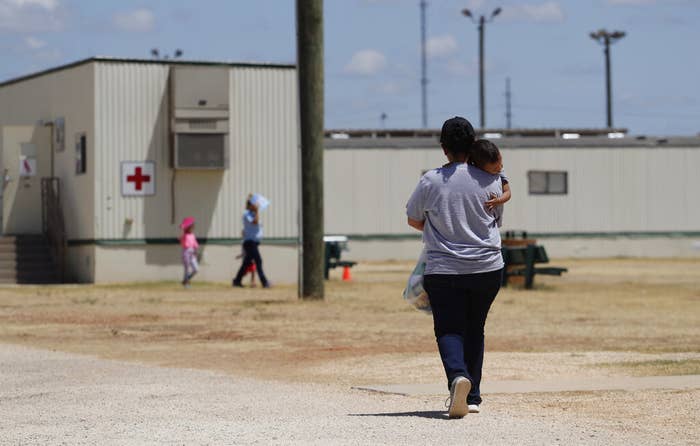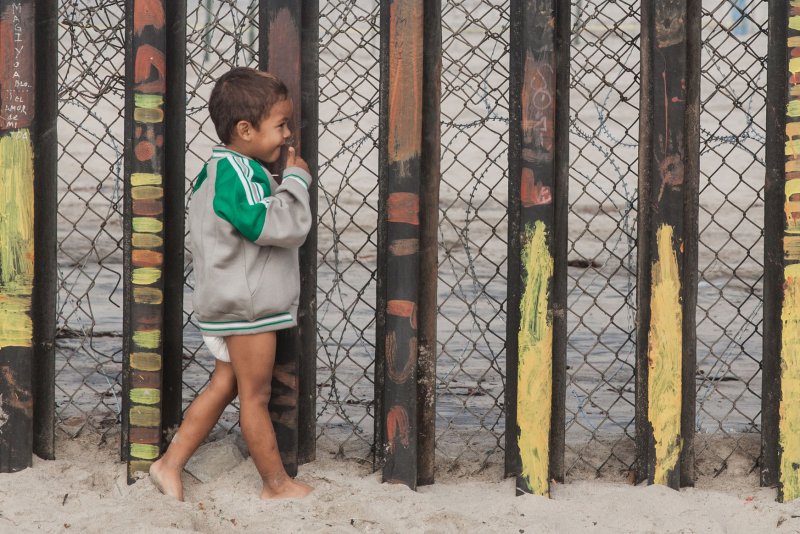For Tammy Tate, a nurse at a Missouri hospital, this wave is like watching a train about to crash, knowing that it could be stopped in time — if people would listen.
Brianna Sacks BuzzFeed News Reporter
Posted on November 20, 2020

Courtesy of Steve Edwards
Doctors and nurses work in the COVID-19 unit at a Cox Health location in Missouri.
Cheryl Rodarmel, the chief nurse at the Research Medical Center in Kansas City, Missouri, said she is not sure how much longer she can go on like this.
The 61-year-old has loved her job for all 42 years she has been a nurse. But now, she said, the relentless influx of COVID-19 patients who have deluged her wards has her worried that her hospital system will collapse, and most of the staff along with it due to burnout and contracting the virus themselves. Meanwhile, outside the hospital, too many of her fellow residents refuse to wear a mask or otherwise protect themselves and their communities from the virus, driving infection rates ever higher.

Courtesy of Cheryl Rodarmel
Cheryl Rodarmel
“Those in positions of power are still allowing this virus to run unchecked,” she said. “If we continue like this, we won't have the nurses, beds, or ability to care for everyone.”
Across Kansas and Missouri, as intensive care units fill to capacity and beyond with patients struggling to breathe, an increasingly alarmed chorus of medical professionals are echoing Rodarmel’s worries. This week, Kansas posted a seven-day record for new coronavirus cases. In nearly two days, 5,853 people tested positive and 60 others died. In the first two weeks of November, Missouri recorded more COVID cases — nearly 60,000 — than it did during any other month since the pandemic began. The state’s current positivity rate is a whopping 27%.
“We have doctors with patients in dire circumstances with nowhere to put them except in hallways, and then they leave their hospital and go into the grocery store and people aren’t wearing masks and they’re gathering in large groups,” said Brock Slabach, a spokesperson for the National Rural Health Association in Kansas, told BuzzFeed News. “It’s a collision of two different worlds.” Tammy Tate, a nurse at a Missouri hospital, compared it to watching a train about to crash, knowing that it could be stopped in time — if people would listen.
The coronavirus is now surging through rural areas that were mostly spared when the outbreak first hit New York, California, and other densely populated areas this spring. At the same time, residents, especially in smaller communities, are refusing to wear masks and reacting with fierce anger at anyone — from their doctor to their governor — who suggests that they should.
On Wednesday, Kansas Gov. Laura Kelly, a Democrat, issued her second attempt at a mask order. The first, enacted in July, failed after most of the state’s counties balked and opted out. Republicans attacked her for trying to institute a one-size-fits-all approach. This time, she’s giving counties one week to come up with their own mask regulations; otherwise, they will have to follow the state’s order.
In neighboring Missouri, Gov. Mike Parson, who tested positive for the coronavirus in September, has repeatedly refused to enact a statewide mandate despite a recommendation from the White House’s coronavirus task force in August and ongoing pleas from the state’s medical leaders. Parson on Thursday continued to insist that a mask mandate was not necessary, even as he made a dire announcement that he is extending Missouri's emergency order through next March, saying the state remains “central to the extreme COVID-19 outbreak our country is currently experiencing.”
“Missouri is at a turning point, and if we are going to change the outcome, we must change our behavior,” he said. But he added he would not issue any orders preventing residents from gathering during the holidays, instead letting cities and counties make their own health and safety rules and telling people to take “personal responsibility.”

Steve Edwards@SDECoxHealth
140 Covid positive inpatients, 116 at Cox South, 17 Cox Branson, 4 Cox Monett, 3 Cox Barton County. 28 critical. Below is an image of the before and after COVID unit, note 6+ staff caring for one patient. Our region owes these doctors, nurses, RTs so much.02:29 PM - 17 Nov 2020
Reply Retweet Favorite
Top health officials in his state have been begging him to take a different course. In a tweet, Steve Edwards, the CEO of CoxHealth, a large hospital system based in Missouri, wrote that while he respects the governor, “we are now under uniform threat and, like war, it requires a coordinated response.” In a Nov. 13 letter to Parson, Missouri Hospital Association President Herb Kuhn warned that “the wolf is at the door” and implored him to require all residents to wear a mask; just making comments “is not enough,” Kuhn wrote. A nurse even started her own Change.org petition, arguing that a mask mandate would help save hospitals. It has garnered nearly 6,000 signatures in a few days.
The onslaught of COVID patients has reverberated through hospitals, forcing emergency rooms to give up beds and pulling resources from pediatric units to accommodate the wave of severely ill patients. Nurses and doctors told BuzzFeed News that ventilators are again becoming scarce. At times, patients — some with serious or life-threatening conditions other than COVID — are waiting 36 hours for a bed or just flat out can’t get one. And it’s becoming increasingly difficult to find beds for them at other facilities. If the situation continues to deteriorate, many healthcare workers said, they might have to ration who gets treatment.
“Hospitals in Kansas are calling as far away as Omaha, Denver, [and] Oklahoma City to transfer them and finding they are full, too,” Slabach of the National Rural Health Association said. “It's a scramble.”

Courtesy of Cheryl Rodarmel
Nurses protest outside the Menorah Medical Center in Overland Park, Kansas.
Meanwhile, nurses say they are being “stretched as thin as possible,” as Rodarmel put it. This week, nurses at her hospital and at the Menorah Medical Center in Overland Park, Kansas, 20 minutes away, staged protests over what they say is inadequate staffing and a lack of personal protective equipment. According to the National Nurses United, Menorah and Research Medical cut their staffing budgets during the height of the pandemic, forcing nurses to take on more and more patients. Nurses at the Research Medical Center have picked up 800 additional shifts to help fill in staffing holes, while nearly 250 others have left due to burnout or unsafe working conditions, according to Rodarmel.
Her scratchy, exhausted voice breaking, Rodarmel said that after nearly 30 years working at her hospital, she’s struggled to “pull up the enthusiasm and joy that once earmarked [her] nursing career,” put on her uniform, and walk in those doors because she doesn’t know what she will be asked to do and whether she will be safe. A nurse at her hospital, after caring for a patient without proper protective gear, died in April from COVID-19, Rodarmel said.
“That should never have happened,” the chief nurse said.
Along with Rodarmel, other healthcare workers told BuzzFeed News that they are also back to reusing masks, stretching out one single-use covering for 24 hours or even days before they are able to get a new one.
It’s like going back into a war you’ve already fought — and it’s worse the second time, Tate, a nurse at another Missouri hospital, told BuzzFeed News. Eight months since the pandemic was declared, officials at her hospital are still rationing personal protective equipment, she said. Gloves are locked up and the inventory monitored. She said she gets one surgical mask for a 12- to 14-hour shift — and after she uses it three times, it’s sent off to be cleaned and then returned to be reused. At the end of each shift, she bleaches her protective face shield so she can wear it again the next day. It’s unconscionable, she said, to imagine continuing on at this rate.
“It’s never-ending,” she said. “Our task force, which is all our hospitals working together, stated that if we continue on this pace of 100-plus COVID admissions per day, our health systems will collapse by the first week in December.”
And given how devastating community gatherings linked to Halloween have been in terms of transmission, healthcare professionals said they’re bracing for the weeks after Thanksgiving.
In Missouri’s Newton County, which does not require residents to wear a mask, officials announced Tuesday that they will be using money from the federal CARES Act to pay for a mobile morgue because “area facilities are full.” The purchase was partly in response to an urgent letter from a coalition of health officials, who warned leaders in Newton County, surrounding cities like Jasper, and elsewhere in southwest Missouri that medical centers are about to hit a breaking point. Health officials, too, begged for more masks.
“More ventilators are being used in our hospitals than ever before. … Wait times in the ER are getting longer and the availability of hospital beds in our community and others are diminishing,” they wrote. “We are in a public health crisis.”
In response, several cities said they were counting on residents to do their part to keep the community safe, KOAM News Now, a local outlet, reported. On Thursday night, Larry Bergner, administrator of the Newton County Health Department, told BuzzFeed News he won’t be issuing a mask order. He still doesn’t think it’s necessary. ●

Brianna Sacks is a reporter for BuzzFeed News and is based in Los Angeles.












